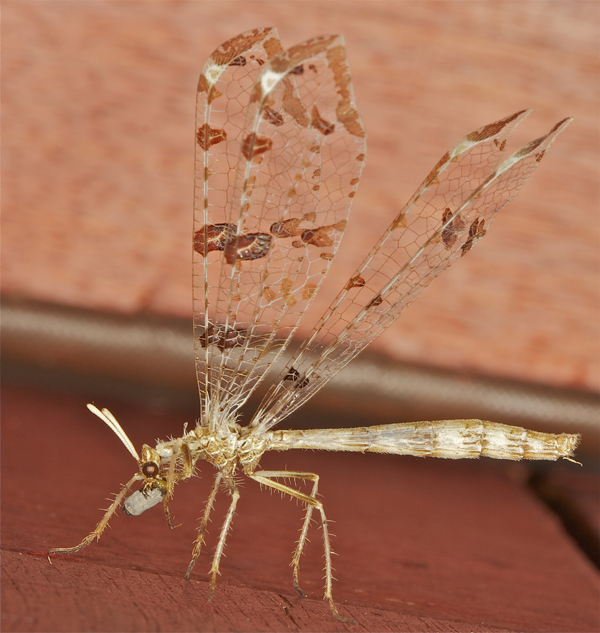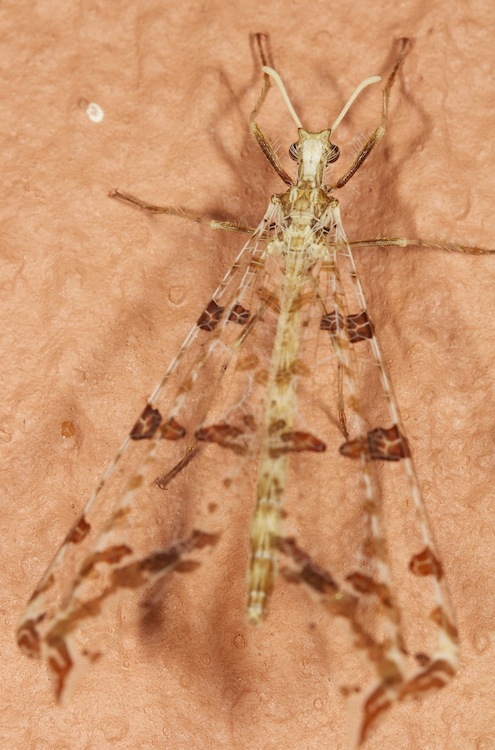Kalahari Antlion Crambomorphus kalaharicus
Family Myrmeleontidae. Subfamily Palparinae. Tribe: Palparini
The Family Myrmeleontidae is the largest lacewing family, comprising medium to very large (wingspan 26-160 mm) insects that superficially resemble dragonflies, but have short antennae usually ending in a club. Characteristic lazy, flapping flight. Most are attracted to lights in summer and autumn. Almost half the region's 125 species occur in arid western areas.
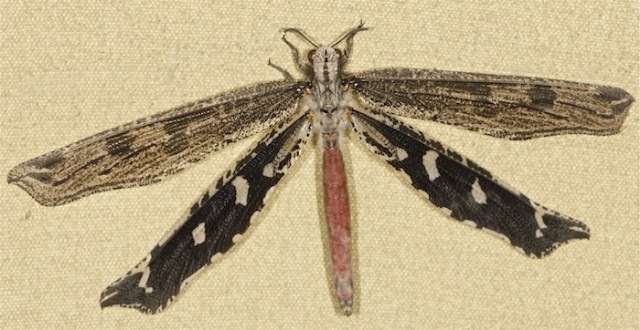
© ExFmem
Genus Crambomorpus
The genus Crambomorphus McLachlan, 1867 includes some of the largest and most striking antlions. It is essentially endemic to the arid western regions of southern Africa (South Africa, Namibia, Botswana), but also with two species from Madagascar.
Four species names have historically been associated with
Crambomorphus:
C. sinuatus (Olivier) and
C. haematogaster (Gerstaecker) from South Africa, and
C. madagascariensis (van der Weele) and
C. grandidieri van der Weele from Madagascar.
Crambomorphus haematogaster is a synonym of
C. sinuatus (Brauer 1867), reducing the hitherto known species to three.
All are large, cryptic, darkly coloured antlions with wings that are either narrow and sinuate or lanceolate with characteristic markings that enhance the camouflage of these magnificent insects. They are nocturnal in habit and the irregular outline of the wings and dark coloration render them extremely cryptic on narrow stems of shrubs and bushes when diurnally at rest with the wings folded. The three-toothed larvae of two species are known and have been found inhabiting deep sand.
Crambomorphus, and the Palparini in general, are a significant component of the insect fauna of arid and semiarid areas, where their biomass and large predatory larvae have an undoubted impact on populations of other invertebrates. Most taxa are also restricted to specific biomes, rendering them potentially important indicator species (Mansell 1999).
Diagnosis: Large Palparini, with characteristic narrow, sinuate or lanceolate, heavily-pigmented, densely reticulated wings; costal area usually with one or more irregular biaereolate or triaereolate cells. Head robust with raised vertex, distinct median stripe on head extending onto pronotum and mesonotum. The palpimacula on the terminal labial palpomere is a long slit that extends for much of the incrassate portion of the segment as far as the tip, but not beyond. Abdomen blood-red in living specimens. Male ectoprocts black, forcipate. Males with gonarcus and parameres complex fused into a cone-shaped structure, gonarcal bulla prominent, parameres pitch black sculptured with microscopic striations. CuP in forewings not
fused with A1; in hindwings CuA arches forward at junction with posterior branch of Mp fork, forming the typical palparine recurrent vein. All males with prominent pilula axilaris at base of the hindwing. Larvae characterized by reddish brown head and three mandibular teeth and thorax and abdomen black or pale with black markings.
Distribution
Crambomorphus kalaharicus is endemic to the Kalahari ecosystem of the Northern Cape Province of South Africa, Botswana and Namibia. It is centred and protected within the Kgalagadi Transfrontier Park of South Africa and Botswana.
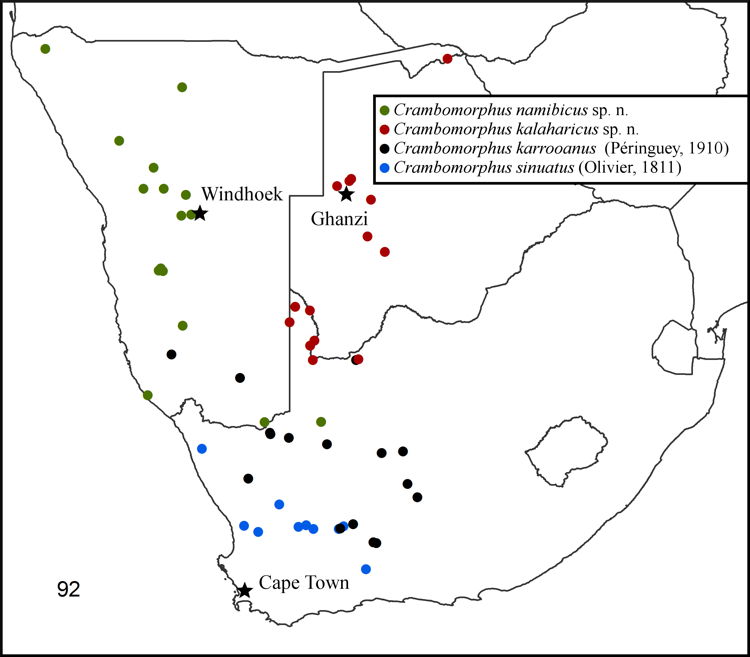
- Carambomorphus sp map.png (113.65 KiB) Viewed 3431 times
Identification of Crambomorphus kalaharicus
Very large (wingspan 122 mm), body and legs grey, abdomen orange-red. Hind margin of wing very scalloped, ending in a hooked tip. Fore wings largely grey, with complex black and white markings; hind wings heavily marked in black. Larvae largely black with reddish head.
Head: wider than prothorax, vertex raised, pale brown, densely speckled with black maculae and clothed with dense white recumbent setae; median black stripe extends from vertex broadening posteriorly over prothorax; frons yellow with recumbent white setae; black markings extend below toruli, clypeus and labrum yellow. Eyes large, greater than hemispherical. Antennae slightly longer than head width, black, densely clothed in short black setae.
Thorax: prothorax short, much wider than long, pale yellowish-brown with central black stripe, a small spot on either side, lateral margins black, anterior margin raised, finely spotted, with dense fringe of long white anteriorlydirected setae and black setae posteriorly, hind margin raised with long white and black setae. Mesothorax covered with long white and black pubescence, a central black stripe divided posteriorly, black patches above wing bases. Metathorax mostly black with long white recumbent setae and velvet patches anteriorly.
Wings: very narrow, marked with brown, hind margins of both fore- and hind wings characteristically sinuate, with markedly acute falcate tips (Figs 16, 17); crossveins pale yellow, R with alternating black and yellow; pterostigma miniscule, hardly discernible. Forewings with four light-brown markings; basal mark large, diffuse, apical mark divided, posterior margin with very narrow sinuate pale brown stripe in apical half. Hind wings brown with three pale incomplete bands and pale areas basally and in costal area.
Legs: black with faint pale patches on tibiae, densely covered with short white and black spinose setae; forelegs with dense setal brush on tibiae, tibiae longer than tarsi in all legs, tibial spurs slender, black, curved.
Abdomen: shorter than hind wings, red in living specimens, clothed with short black setae, with some long white setae on T1 and anterior margin of T2.
Biology
The large black larvae live freely in sand dunes in the Kalahari ecosystem and come to the surface at night to feed. They have been excavated by sieving, usually several centimetres below the surface. It is possible that they either actively hunt on the surface at night or are crepuscular
ambush predators just below the surface, with the red dorsum of the head and prothorax blending with that of the surrounding red Kalahari sand. Their black coloration provides a stark contrast to larvae of
Golafrus oneili (Péringuey) and
Annulares annulatus (Stitz), which occur in the same habitat but are predominantly white. This leads to the conclusion that
C. kalaharicus larvae are largely crepuscular and nocturnal,
whereas the latter two species spend more time near the surface during daylight, with their white coloration being an adaptation to radiate heat thereby enabling them to tolerate the high surface temperatures more effectively. The dark coloration of
C. kalaharicus probably is an adaptation to heat retention by surfacehunting nocturnal predators. Adult flight period October to early January.
Habitat
Very arid regions with scant vegetation
Predators
Predators of lacewings include birds, bats, reptiles, and larger insects.
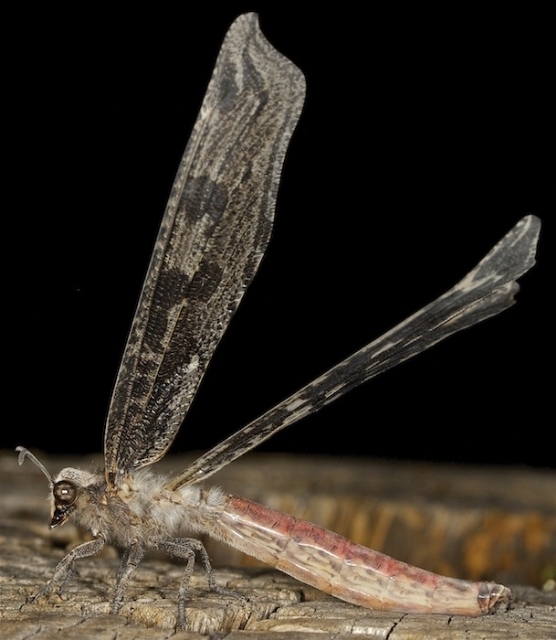
© ExFmem
Female
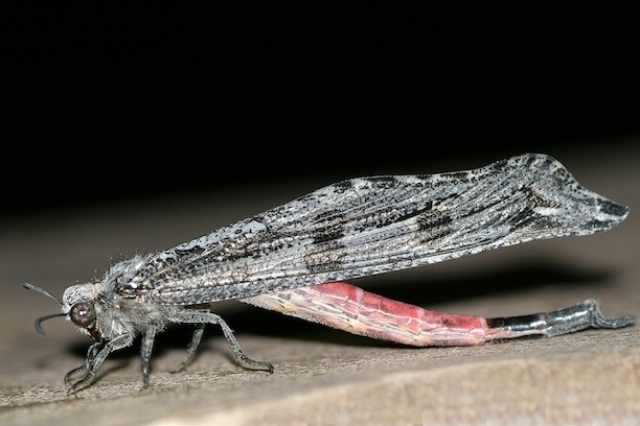
© ExFmem
Male

© ExFmem
Kgalagadi Transfrontier Park, Kalahari Tented Camp

© Tina
Kgalagadi Transfrontier Park, Grootkolk
Links:
https://lacewing.tamu.edu/neuropterida/ ... -17495.pdf
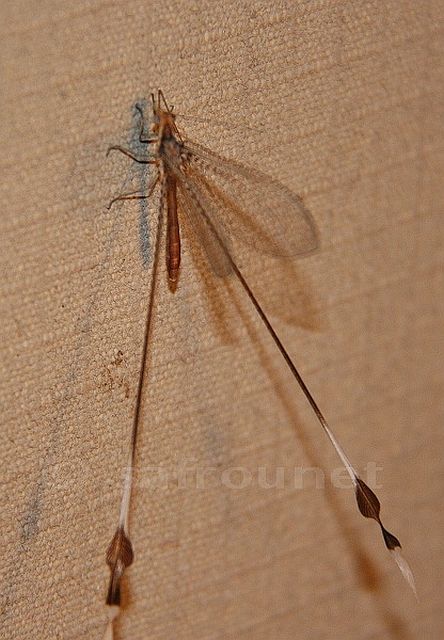
 © BluTuna
© BluTuna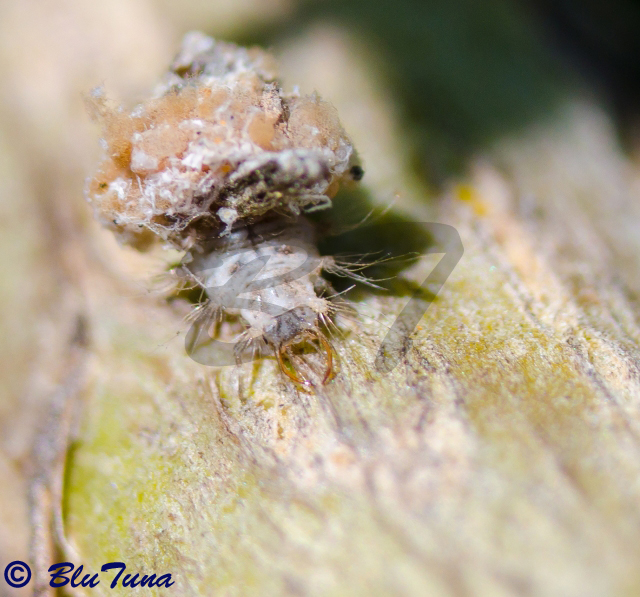 © BluTuna
© BluTuna © ExFmem
© ExFmem © ExFmem
© ExFmem © ExFmem
© ExFmem © ExFmem
© ExFmem © Tina
© Tina © Super Mongoose
© Super Mongoose © BluTuna
© BluTuna © BluTuna
© BluTuna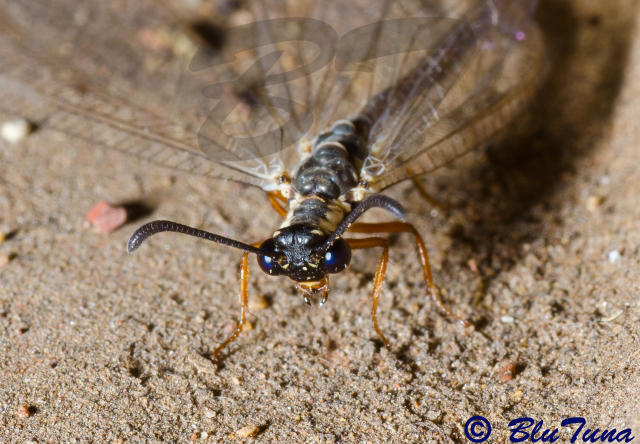 © BluTuna
© BluTuna
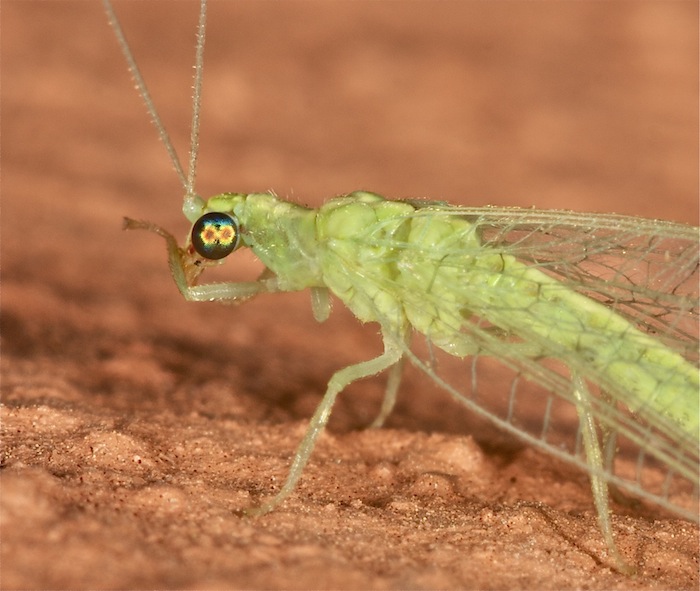

 © BluTuna
© BluTuna